There are three fantastic World Heritage Sites in Gujarat, a state in western India located along the Pakistan border. There’s a great mix here of cultural cities and ancient ruins, all packed into an exciting and interesting state.
Don’t forget to follow World Heritage Journey on Facebook, and subscribe to World Heritage Journey on YouTube to learn more about World Heritage Sites!
But now, let’s explore the excellent historical place of Gujarat.
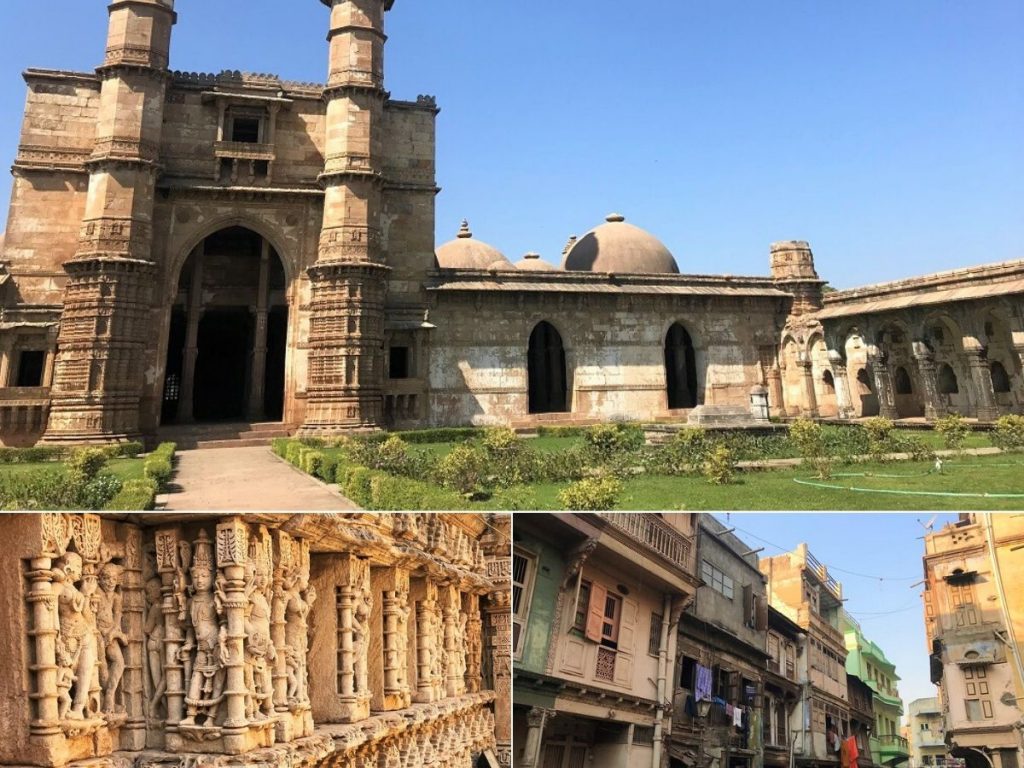
Historic City of Ahmedabad – World Heritage Site
First among the World Heritage Sites in Gujarat is the historic city of Ahmedabad. Founded in 1411 as the capital of Gujarat (a purpose it still serves today), the old core of Ahmedabad still exists in many places. The highlight here are the Pol, clusters of houses that serve as tiny neighbourhoods in their own right.
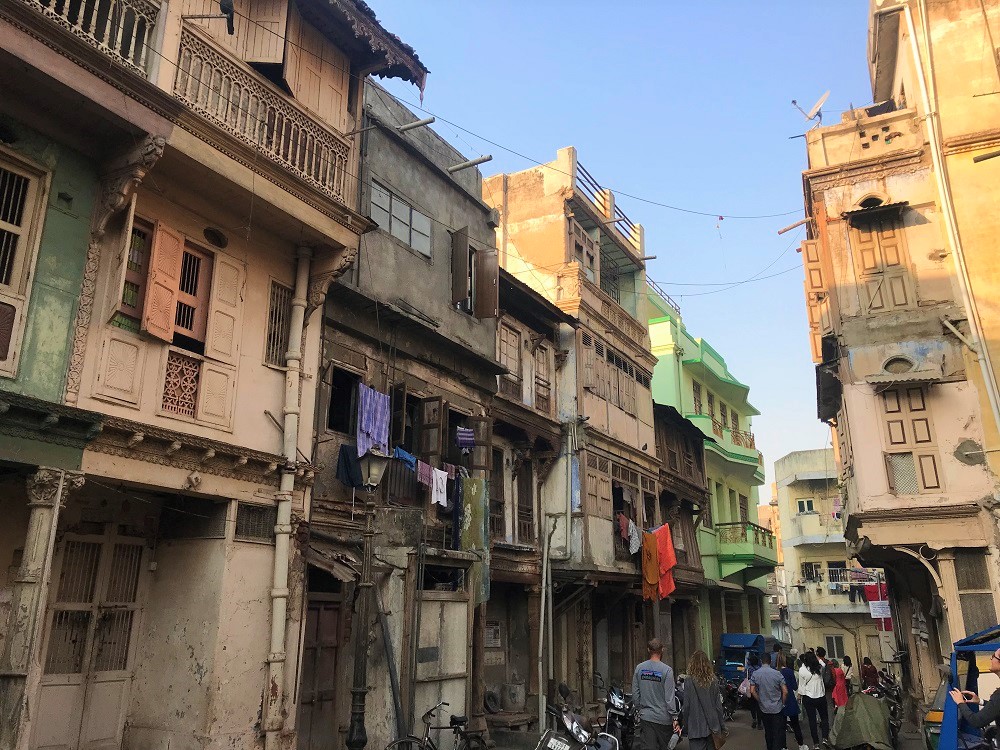
Complete with houses, shops, walls and gates, the Pols were originally created to stifle religious tensions between Muslims and Hindus. These days the Pols serve as little reminders of the city’s rich history. Ahmedabad is also home to several fascinating temples and mosques, most of which are still in use.
We had a fantastic time rising at dawn with the call to prayer, and exploring the city on a photography tour. There’s so many opportunities for fantastic photos, along with incredible food and friendly locals. Ahmedabad really is a fantastic World Heritage Site in Gujarat, and it’s definitely one of the best places to see in Gujarat.
Rani ki Vaav (Queen’s Stepwell) – World Heritage Site
The next of our Gujarat points of interest is Rani ki Vaav, or the Queen’s Stepwell. Stepwells are a type of underground water storage facility, unique to this part of India, and Rani ki Vav is one of the largest and most beautiful. Constructed around the 10th or 11th century, it reaches an impressive depth of 27 metres underground!
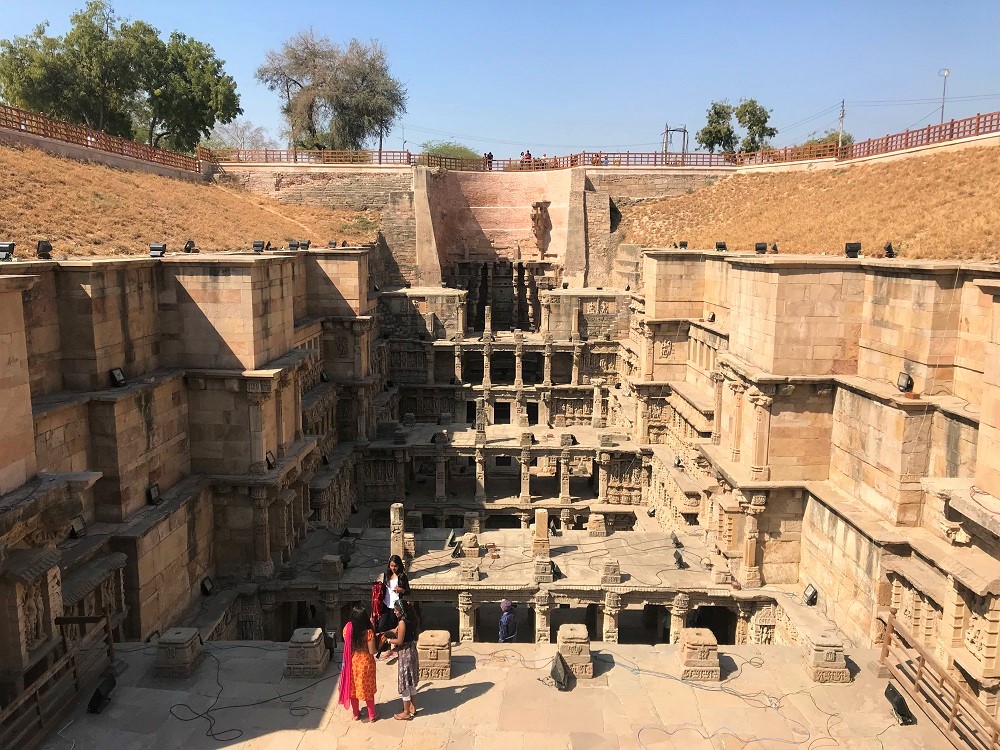
The walls and pillars are covered in intricate decorations. Some of them are religious and some of them are secular, but all have incredible detail and artistry. Interestingly, the carvings on-site are all original and mostly in pristine condition. That’s because the stepwell was buried by river silt centuries ago, and only rediscovered in the 1980s. Definitely another of the fascinating monuments of Gujarat.
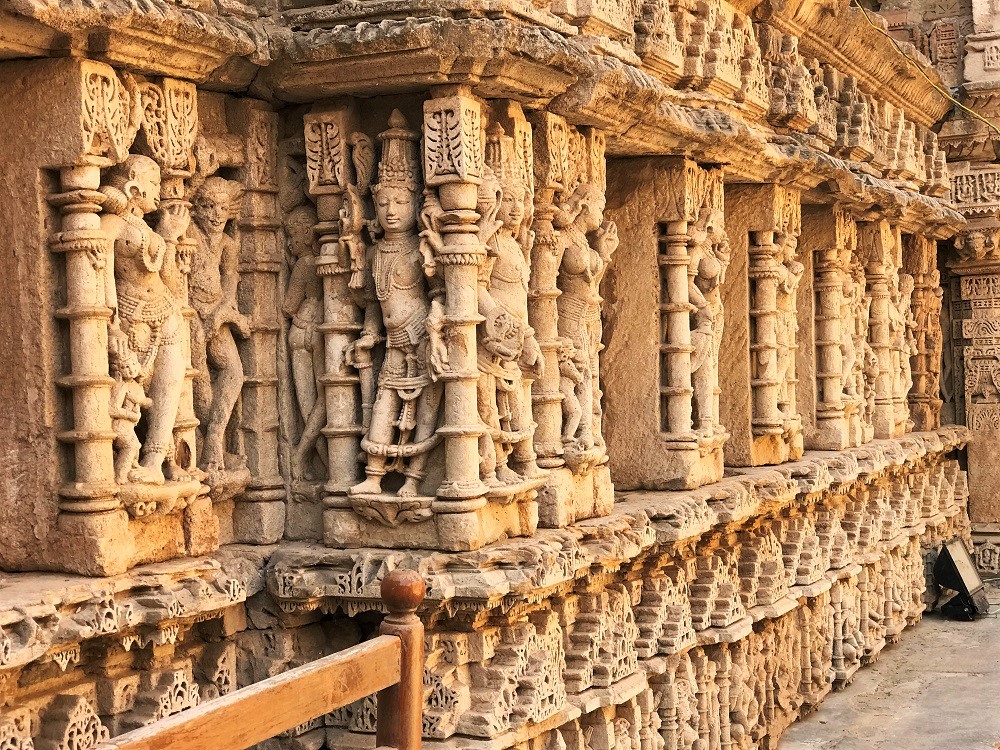
Champaner Pavagadh Archaeological Park – World Heritage Site
The last World Heritage Site in Gujarat is a combination site: the Champaner-Pavagadh Archaeological Park. The site has two components: a Hindu pilgrimage site on Pavagadh hill, and the nearby historic city of Champaner, dating back to the 8th century.
For our visit we chose to focus on Champaner. Here, most of the buildings date from around the 15th century during a period of Muslim rule. Inside is a series of impressive mosques, temples, city walls, tombs, and terraces. The enormous Jama Masjid is particularly impressive, built in a typical Indian Muslim style. They’re very reminiscent of the World Heritage Sites in Delhi.
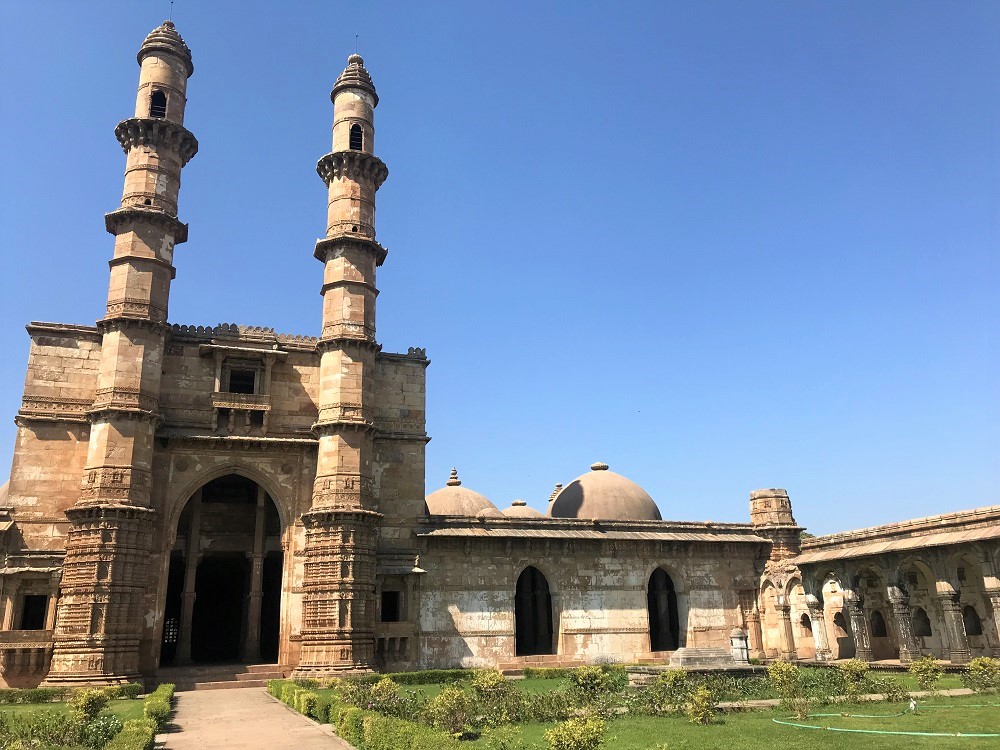
There’s also large sections of the city walls and gates remaining, which were fun to explore around! Nearby you can also find some royal pavilions, and of course step-wells too – many of which are beautifully decorated and in great condition. Champaner World Heritage Site should definitely be on your list of places to visit in Gujarat.
Conclusion
If you’re interested in learning more about Indian World Heritage sites, check out our other guides:
- World Heritage Sites in Delhi
- World Heritage Sites in Rajasthan
- World Heritage Sites in Uttar Pradesh
- World Heritage Sites in Mumbai
Enjoy!
